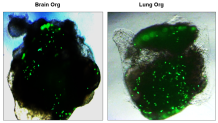When people think of symptoms associated with COVID-19, they often think of it as being a respiratory infection. But the symptoms can really be across the board, and new research being done at UC San Diego School of Medicine is showing that.
“What we have learned over the whole year, since COVID-19 came, even though the target site of the infection are lungs, but the consequences we are seeing in people are linked with the heart, brain and many other things,” explained Tariq Rana, PhD, professor and chief of the Division of Genetics in the Department of Pediatrics at UC San Diego School of Medicine and Moores Cancer Center.
So this led researchers to two questions:
Does the virus infect all the body’s organs in the same way? And are the issues we’re seeing with the virus, because of how our body is reacting to the infection?
Get San Diego local news, weather forecasts, sports and lifestyle stories to your inbox. Sign up for NBC San Diego newsletters.
Researchers with UCSD are using stem cells to create mini 3D organ-like structures representing the lungs and brain, to analyze.
The representation of the virus in both the brain and lungs was significantly more prevalent in the lungs.

“When a virus infects cells, there are molecules on the surface, these are like doorknobs, and it turns out there are 10 times more doorknobs in lungs than in the brain. Which makes sense that there was more infection in the lungs than the brain,” explained Rana.
Local
This in turn will impact how the virus is treated when it attacks different organs.
Researchers are also looking at how the virus affects people of different racial and ethnic backgrounds to hopefully be able to supply more specific treatment options.
Researchers with UC San Diego are also focusing efforts on creating new vaccines right now to hopefully test, and eventually help in the fight against the deadly disease.
Click here to view the full study.



